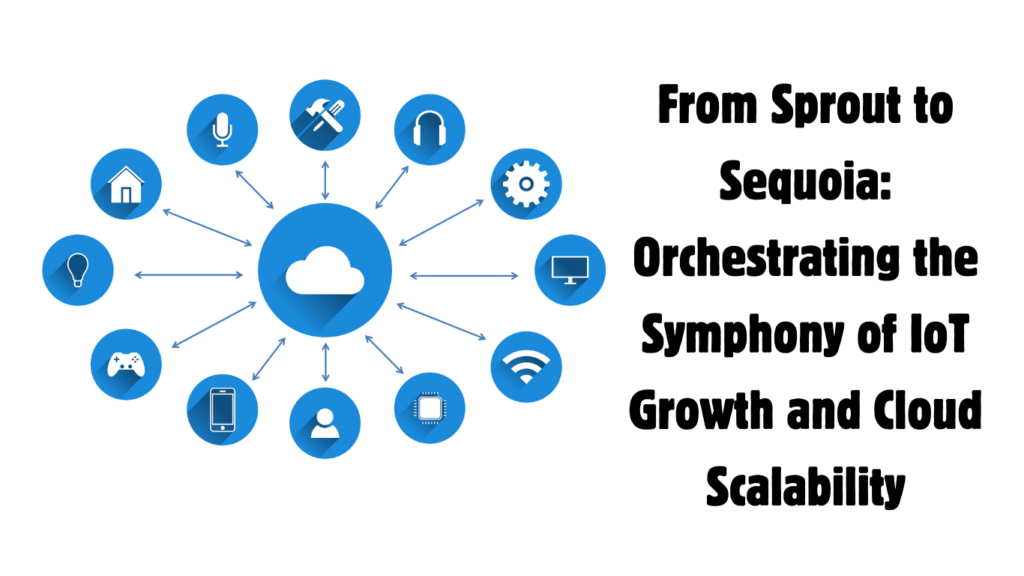In today’s digital landscape, the Internet of Things (IoT) stands as a transformative force, connecting devices and reshaping industries. The journey from a simple sprout to a towering sequoia encapsulates the evolution of IoT, driven by cloud scalability and cutting-edge technologies.
This intersection of innovation has birthed resilient systems, empowering industries like agriculture, manufacturing, healthcare, and smart cities. Tailoring GenAI Products for Diverse Mobile Developer Personas has become a key part of enabling these industries to enhance the adaptability of their IoT systems.
The early stages, where nascent technologies like sensors and wearable devices germinate, highlight the significance of creating a robust ecosystem for the growth of these interconnected systems.
The IoT revolution was initially about connecting devices—an idea as simple as enabling a thermostat to communicate with your smartphone.
However, with the rapid acceleration of device adoption and the proliferation of IoT systems, the landscape has become more complex.
These “seeds” of innovation needed fertile ground—enter cloud scalability, the foundational soil for this technological forest.
Cloud computing provides the resources, storage, and processing power necessary to ensure these interconnected systems can thrive without being stunted by limitations in infrastructure or scalability.
Scalability as the Growth Catalyst
The growth of IoT demands a scalability framework that can handle increasing data volumes, diverse industries, and evolving systems. This catalyst nurtures the growth phase of IoT, enabling devices to seamlessly integrate into larger ecosystems while fostering operational efficiency.
Cloud scalability supports this expansion by offering elastic infrastructure and real-time solutions.
As more industries integrate IoT technologies, the ability to scale efficiently becomes a deciding factor for success. Without a scalable infrastructure, IoT ecosystems risk becoming bottlenecked, hindering their potential to deliver transformative outcomes.
From startups deploying smart home devices to large-scale industrial IoT (IIoT) applications, scalability acts as a cornerstone, ensuring that the systems evolve alongside growing demands.
Flexibility: Adapting to Dynamic Needs
Just as a sprout bends toward sunlight, IoT deployments require flexibility to adapt to fluctuating demands. Cloud platforms ensure resources are dynamically allocated, supporting surges in connectivity and lulls in activity.
This ability to adjust seamlessly enables businesses to thrive in a rapidly evolving ecosystem.
Moreover, flexibility in IoT systems ensures they can respond to unforeseen challenges, such as unexpected spikes in usage or new regulatory requirements.
Cloud scalability empowers businesses to scale up during periods of high demand and scale down during quieter periods, optimizing costs without compromising performance. This adaptability fosters resilience, ensuring systems remain operational under all conditions.
Resource Management: Sowing the Seeds of Efficiency
Effective resource management underpins the success of IoT systems. The art of allocating computational power, storage, and network resources ensures systems flourish without strain.
By leveraging cloud solutions, businesses can balance their operational demands, creating a foundation for sustainable growth.
Without efficient resource allocation, IoT systems risk underperforming or overextending their capabilities.
Cloud platforms provide the tools necessary to automate and optimize this process, ensuring that devices operate efficiently and data flows without interruption.
This “seed” of resource management, when nurtured, ensures the healthy “growth” of the IoT ecosystem.
The Sapling: Maturation Through the Bounty of Cloud Resources
As IoT progresses to the growth phase, scalable cloud infrastructure becomes essential for nurturing this technological sapling. The maturing ecosystem requires enhanced data collection, connectivity, and security to support its applications and deliver actionable insights.
Data Deluge and Processing Power
The sheer volume of data generated by 75 billion IoT devices projected by 2030 demands immense processing power.
Cloud platforms like AWS, Azure, and Google Cloud provide robust storage solutions, enabling the secure handling of this data deluge. Advanced real-time analytics transform raw data into valuable insights, driving efficiency and innovation.
The ability to handle vast amounts of data is crucial for industries relying on IoT technologies. For instance, in healthcare, wearable devices generate continuous streams of data on patient vitals, requiring real-time processing and analysis to ensure timely interventions.
Similarly, in smart cities, data from sensors monitoring traffic, air quality, and energy consumption must be analyzed swiftly to optimize urban operations.
Centralized Management for Diverse Ecosystems
A centralized management approach simplifies the complexity of diverse IoT ecosystems. Platforms like AWS IoT Core and Azure IoT Hub provide tools for monitoring, firmware updates, and network security. This ensures that interconnected devices function cohesively, fostering system-wide reliability.
Centralized management also aids in maintaining consistency across the IoT ecosystem. With a unified platform, businesses can streamline operations, reduce errors, and enhance overall system efficiency. This holistic approach ensures that the “branches” of the IoT system grow in harmony, supported by a strong “trunk” of centralized control.
Integration of Advanced Protocols: Branching Out into Complexity
Seamless integration of communication protocols enables IoT systems to operate harmoniously. By ensuring devices can coexist and communicate within the same ecosystem, businesses unlock the potential for greater scalability.
Protocols like MQTT, CoAP, and HTTP facilitate communication between IoT devices and cloud systems. These standards ensure that devices from different manufacturers can interact seamlessly, fostering a unified and interoperable ecosystem. This “branching out” into advanced protocols supports the growth of more complex and robust IoT systems.
The Mighty Sequoia: Stability and Reliability in Full Bloom
At full maturity, IoT systems must prioritize stability and reliability. With an exponentially growing infrastructure, robust solutions become crucial for maintaining consistent performance. This phase represents the towering sequoia of IoT’s journey.
Handling Peak Loads with Grace
IoT systems often face fluctuating workloads during peak usage periods. Cloud scalability ensures performance remains resilient, adapting to changing demands and minimizing disruptions. This is akin to a tree weathering seasonal storms with unwavering stature.
Global Reach and Accessibility
The scalability of IoT deployments brings global reach and accessibility to industrial processes, home security, and smart cities. By leveraging cloud infrastructure, businesses provide seamless and responsive experiences across diverse locations, becoming a cornerstone of enhanced service levels.
Redundancy and Disaster Recovery: Weathering the Storms
Redundancy and disaster recovery mechanisms are critical for IoT systems to maintain resilience. Scalability strategies allow organizations to respond effectively to failures, ensuring continued operations under pressure.
Security Concerns in a Scalable Environment
As IoT scales, its attack surface expands. Robust security measures, such as encryption and identity controls, are necessary to safeguard data. Compliance with standards like GDPR and HIPAA ensures systems remain secure and trustworthy.
Interoperability in a Diverse Ecosystem
Achieving interoperability among diverse IoT devices requires balancing protocols and maintaining a harmonious ecosystem. This integration fosters a unified landscape, driving system-wide growth.
Edge Computing’s Role in the Canopy
Edge computing extends the reach of IoT, addressing latency and bandwidth challenges by processing data closer to the source. This hybrid approach enhances real-time decision-making, enabling IoT to thrive as a connected canopy.
AI and Machine Learning as Fruits of Growth
The integration of AI and machine learning unlocks new functionalities in IoT systems, analyzing patterns and predicting trends. These technologies enhance scalability and decision-making, ensuring systems remain adaptable to future demands.
Looking Ahead: Beyond Sequoias to Ever-Growing Horizons
The journey of IoT continues beyond towering sequoias, with emerging technologies like 5G and AI paving the way for new horizons. This ever-expanding landscape reflects the limitless potential of connected ecosystems.
Conclusion: Orchestrating a Symphony of Growth
The journey from sprout to sequoia highlights the harmony of IoT growth and cloud scalability. By addressing challenges and leveraging advanced solutions, businesses can unlock transformative impacts. This symphony of progress ensures that IoT systems flourish in a dynamic, ever-evolving world.



